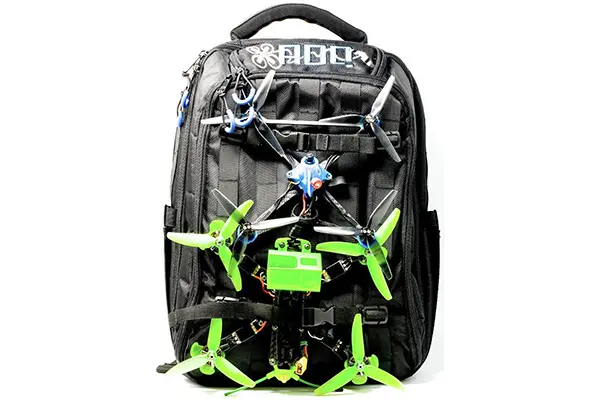Basically, all of the links on this page are affiliate links. I receive a commission (at no extra cost to you) if you make a purchase after clicking one of the affiliate links below. Read our Affiliate Link Policy for more information.
ND FILTERS FOR FPV
CAMERA BUTTER
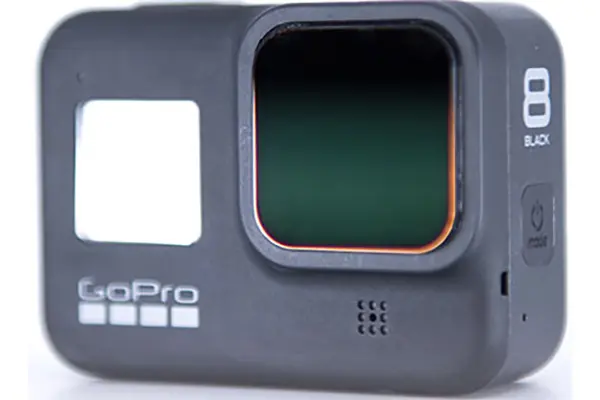
Have you ever noticed that flights at the end of the day look the best? It’s not just because the sun is going down into the “golden hour”. In bright daylight, the shutter speed of the camera produces an overly-sharp, “stuttery” image. When there’s less light, the camera’s shutter speed goes down, and the moving image becomes a tiny bit blurry. This provides a pleasant softness and sense of speed that professional videographers and pro FPV pilots seek out.
But you can’t always shoot during the “golden hour”. That’s where ND filters come in. ND filters reduce the amount of light going into the lens, allowing for pleasantly soft images with just the right amount of motion blur, even when the sun is high in the sky.
ND filters for action cameras have traditionally come in two styles. The first is a stick-on film, basically like window tint. This is difficult to apply without bubbles and has terrible optical quality, but it’s cheap. The second is pro-grade optical filters. These are really expensive (like $30 per filter) and so when they break in a crash, it really hurts.
Camera Butter ND filters are the best balance between quality and price. They are made of optical glass, so they’ve got great image quality. They attach to the lens using a sticky “gasket” so they’re easy to apply and replace. And they’re less than $10 each, so it won’t hurt as much when they break.
Find this product at these vendors:
VIFLY FINDER V2 &
VIFLY MINI
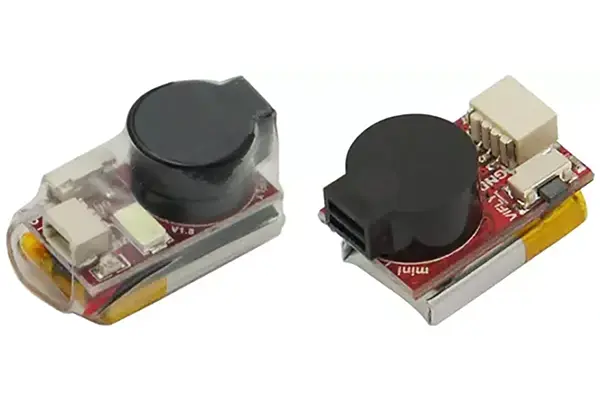
Let’s say you crash your quad somewhere and can’t find it. What do you do? Try to “home in” on the video signal? Beep the beeper? Maybe even arm the quad and listen for the sound of the props thrashing around in the brush. But none of that will help if your battery ejected in the crash and your quad is powered down.
That’s where the ViFly Finder comes in. It’s a super loud (up to 105 dB!) beeper with a tiny 1S lipo cell connected to it. A short while after the quad loses power, it begins beeping, and it doesn’t stop until you find it and disable it (or until the battery runs down). The Finder also acts as a normal beeper that you can activate with a switch on your controller whenever you want.
There are two versions of the Finder: the Mini and the Normal. The Mini is about 3g and its battery lasts about 7 hours. The Normal is about 5g and its battery lasts about 30 hours. In addition, the Normal has a light sensor that turns off the beeper at night. This avoids annoying your neighbors and wasting battery during time when you might not be looking for the quad.
Find this product at these vendors:
All of the GPS units on this page use the M10 chipset. This is the latest, highest-performance GPS chipset. However it is not supported on older operating systems. You will need to be using Betaflight 4.5 or newer, or iNav 6.0 or newer to get proper performance out of these GPS receivers. People using older firmware should find a GPS receiver with the M8 chipset.
GPS receivers on this page are available with and without a compass. For Betaflight, the compass is totally optional. Betaflight doesn’t use the compass for navigation, although the heading indicator will be slightly more accurate if you have a compass, especially if you do a lot of “rotating in place without moving” and moving laterally. iNav is capable of just barely operating without a compass, but the performance of position hold and other autonomous flight modes is significantly better with a compass. We would always use a compass on an iNav build, if at all possible.
IFLIGHT FPV DRONE BACKPACK
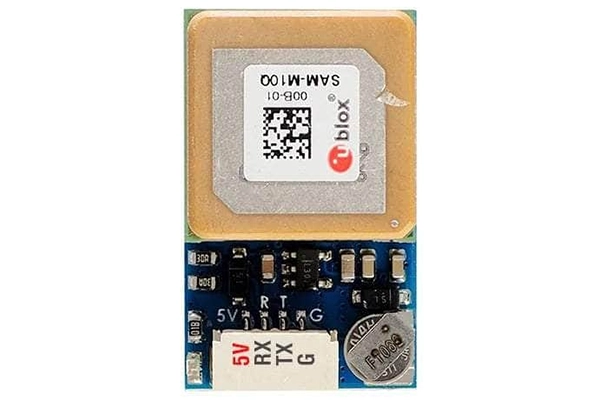
When I went looking for the best, most reliable GPS unit around, the rough consensus among long-range pilots was the Matek M10Q. I was surprised, since it’s so tiny! But it consistently locks a ridiculous number of satellites on every build I’ve used it on. It’s amazing.
The M10Q comes in two versions: with and without a compass. Other than that, the two are identical.
Find this product at these vendors:
Purchase at RaceDayQuads – With Compass / Without Compass
Purchase at GetFPV – With Compass / Without Compass
Purchase at Amazon – With Compass / Without Compass
IFLIGHT FPV DRONE BACKPACK
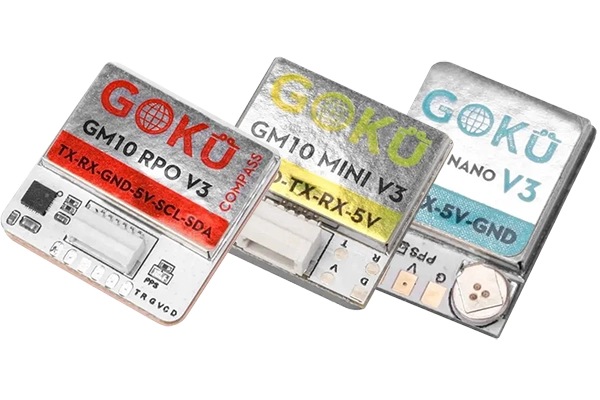
The Flywoo M10 GPS comes in three sizes, so no matter whether you’re building a big 7” cruiser or a tiny 3” toothpick, there’s one that will fit your build. You’d think that the bigger ones would perform better because they have a larger antenna. But even the smallest can lock 15+ satellites under normal conditions. All of these satellites default to 115,200 baud and 10 Hz update rate, for the best performance with modern flight controllers like Betaflight 4.5.
Here are the main differences between the sizes.
The Pro GPS has a compass/magnetometer. The Mini and Nano GPS are available in a version with or without a compass.
The Nano GPS has solder pads instead of a plug. The Pro and Mini GPS have solder pads in addition to a plug.
Find this product at these vendors:
IFLIGHT FPV DRONE BACKPACK
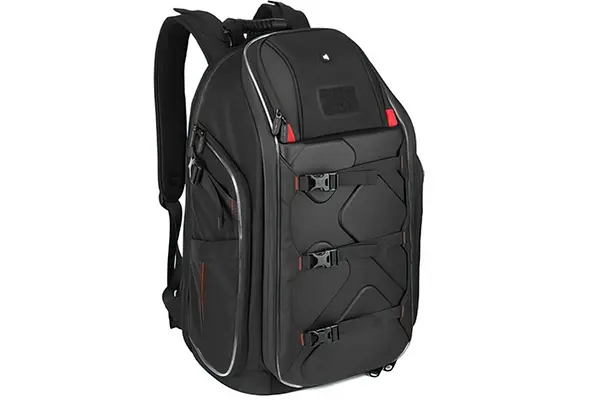
MY DAILY DRIVER
The iFlight backpack is my daily driver because it took everything I liked about the Torvol Pitstop Pro, fixed everything I didn’t like about it, and added LED lighting. What more do you want?
Like the Torvol bag, the iFlight bag has perfect ergonomics. It’s comfortable to wear for long periods and adjusts to most body sizes and shapes. The main compartment is easy to adjust and has plenty of room for most of the things you’d bring to a day of flying. One thing you probably won’t be putting inside the bags is your quads–especially with props on. For that, you’d need an even bigger bag that might not fit airline carryon restrictions. Straps across the back of the bag hold on as many quads as you could want, and the back is rigid to protect the inside from poky bits. The side compartments have the perfect balance of sub-division for organization and big pockets to toss junk into (I use the biggest side pocket for props).
iFlight improved on the Torvol in several ways. They added a 3rd strap across the back to give more versatility in mounting quads. The main flap has additional zippered compartments instead of the Pitstop Pro’s fold-out work surface (that I never used anyway). Oh, and did I mention LED light pipes? Yeah. Color-changing LED light pipes.
Find this product at these vendors:
AULINE FPV DRONE BACKPACK
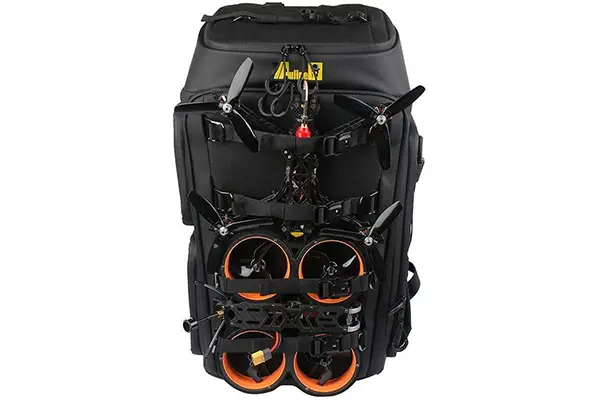
Don’t let the fact that Auline isn’t known for making bags and backpacks fool you. The Auline bag is high-quality, well made, and has some unique design features that will make it the favorite of many people.
The Auline bag’s main compartment is similar to other “camera-bag” style packs, with velcro dividers that can be re-positioned to fit your exact needs. It has a separate hard-sided compartment on top which keeps your controller switches and gimbals safer than if it was stuffed into the bag. You can also use this compartment for a 5″ drone (with props off).
The exterior of the bag is a polyester/polyurethane blend. It’s tough, but not as premium-feeling as some alternatives. A laptop pouch in back fits up to a 16″ laptop and has a side-opening zipper, which makes it easy to remove the laptop even without taking the bag off your back. There are two half-height pockets on one side, and a single full-length pocket on the other side. The full-length pocket has a stretchy pouch on the outside with a strap for holding a tripod or other long accessory.
On the rigid back panel are four straps for holding quadcopters. These have magnetic clips which I found to disconnect a little too easily when jostled. Others replied to this critique by pulling and tugging on the clips, showing that they were secure. That’s true. But if you tap the actual release tab even lightly, it comes loose, and bottom line: this happened to me more than once while setting down the bag or while carrying it in a tight environment.
The Auline FPV backpack was almost my favorite backpack. I love the layout–especially the dedicated top compartment. It’s comfortable even when loaded up, and it seems reasonably durable and well made.
Find this product at these vendors:


